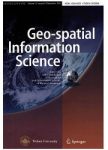Low-complexity online correction and calibration of pedestrian dead reckoning using map matching and GPS
作者机构:Institute of Applied Microelectronics and CEUniversity of RostockRostockGermany
出 版 物:《Geo-Spatial Information Science》 (地球空间信息科学学报(英文))
年 卷 期:2019年第22卷第2期
页 面:114-127,I0004页
核心收录:
学科分类:0303[法学-社会学] 0709[理学-地质学] 08[工学] 0708[理学-地球物理学] 082303[工学-交通运输规划与管理] 0705[理学-地理学] 0813[工学-建筑学] 0833[工学-城乡规划学] 082302[工学-交通信息工程及控制] 0812[工学-计算机科学与技术(可授工学、理学学位)] 0823[工学-交通运输工程]
主 题:Indoor localization Pedestrian Dead Reckoning(PDR) Inertial Navigation System(INS) map matching Zero Velocity Update(ZUPT)
摘 要:Dead Reckoning is a relative positioning scheme that is used to infer the change of position relative to a point of origin by measuring the traveled distance and orientation *** Dead Reckoning(PDR)applies this concept to walking *** method can be used to track someone s movement in a building after a known landmark like the building s entrance is ***,the movement of a foot and the corresponding direction change is measured and summed up,to infer the current *** and integrating the corresponding physical parameters,*** inertial sensors,introduces small errors that accumulate quickly into large distance *** of a buildings geography may reduce these errors as it can be used to keep the estimated position from moving through walls and onto likely *** this paper,we use building maps to improve localization based on a single foot-mounted inertial *** describe our localization method using zero velocity updates to accurately compute the length of individual steps and a Madgwick filter to determine the step *** though the computation of individual steps is quite accurate,small errors still accumulate in the long *** show how correction algorithms using likely and unlikely paths can rectify errors intrinsic to pedestrian dead reckoning tasks,such as orientation and displacement drift,and discuss restrictions and disadvantages of these *** also present a method of deriving the initial position and orientation from GPS *** verify our PDR correction methods analyzing the corrected and raw trajectories of six participants walking four routes of varying length and complexity through an office building,walking each route three *** quantitative results show an endpoint accuracy improvement of up to 60%when using likely paths and 23%when using unlikely ***,both approaches can also decrease accuracy in certain *** identify those scenarios and



